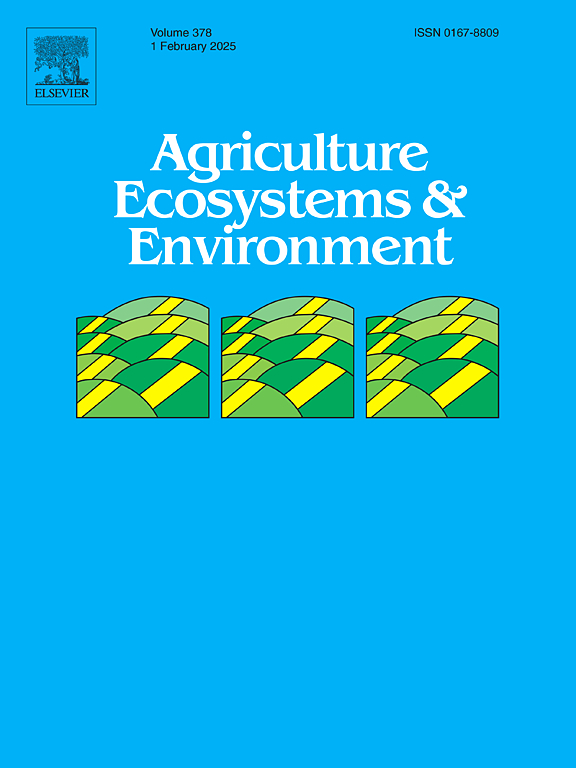Green infrastructure impacts in winegrowing: A systematic map
IF 6
1区 农林科学
Q1 AGRICULTURE, MULTIDISCIPLINARY
引用次数: 0
Abstract
Viticulture for wine grapes (winegrowing) is an agricultural practice which when intensively conducted has negative impacts for the environment. Over the years there has therefore been a development toward more sustainable practices in winegrowing. The integration of green infrastructure, encompassing non-vine vegetation, water elements, and other human-made structures (e.g. nest boxes) offer potential solutions to these challenges, together with additional benefits for the production systems. We conducted a systematic map to understand the scientific evidence regarding impacts from green infrastructure interventions in winegrowing. In total, 380 publications were included based on relevant criteria, with 369 studies regarding vegetation elements. Many of the studies focused specifically on floor cover vegetation interventions, and biodiversity-related impacts have been given extensive focus in relation to all forms of green infrastructure. The study identifies opportunities to further explore impacts related to green infrastructures which are not floor cover vegetation interventions, and human-oriented impacts in relation to various green infrastructures. This includes operational, social, and cultural aspects. It would also be valuable to assess multiple impacts across the environmental, economic, and sociocultural dimensions within the same studies. Additionally, further studies could be undertaken in geographic regions which have up until now received limited coverage, including areas with younger wine production industries. In conducting our study, we recognise limitations related to the interpretation and boundary setting for the concept of green infrastructure. We also encourage further evidence collection on the topic by using additional databases, conducting searches in languages other than English, and applying alternative inclusion criteria.
求助全文
约1分钟内获得全文
求助全文
来源期刊

Agriculture, Ecosystems & Environment
环境科学-环境科学
CiteScore
11.70
自引率
9.10%
发文量
392
审稿时长
26 days
期刊介绍:
Agriculture, Ecosystems and Environment publishes scientific articles dealing with the interface between agroecosystems and the natural environment, specifically how agriculture influences the environment and how changes in that environment impact agroecosystems. Preference is given to papers from experimental and observational research at the field, system or landscape level, from studies that enhance our understanding of processes using data-based biophysical modelling, and papers that bridge scientific disciplines and integrate knowledge. All papers should be placed in an international or wide comparative context.
 求助内容:
求助内容: 应助结果提醒方式:
应助结果提醒方式:


